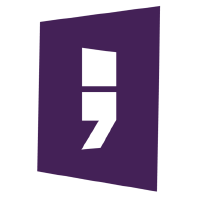How to Make Windows Software with JavaScript - Yes, You Can!
So, you’ve heard about JavaScript, the cool language behind websites, right? Well, guess what? You can use it to create real Windows software too! In this article, we’re going to explore how you can do just that.
introduction
Okay, let’s get started by understanding what we’re diving into. Building software for Windows used to be all about fancy languages like C++, C#, and stuff. But these days, JavaScript is joining the party, and it’s bringing a whole lot of fun with it.
Picking the Right Toolbox
Now, before you get all excited, it’s essential to pick the right tools for the job. There are a bunch of options out there, and it’s crucial to choose the one that fits your project like a glove. It depends on things like who’s going to use your software and where it’s going to run.
Pros and Cons of JavaScript Windows Software
| Pros | |
|---|---|
| 1. Works on Many Computers | JavaScript Windows software can often work on different kinds of computers, not just Windows. So your program can reach more people. |
| 2. Uses Web Skills | If you already know how to build websites with JavaScript, you can use those same skills to make Windows software. It’s like using a familiar tool. |
| 3. Talks to Windows | With JavaScript, you can talk to Windows and use its special features like saving files, using the camera, or sending notifications. It’s like speaking the Windows language. |
| 4. Lots of Help | Many people use JavaScript, so you’ll find lots of friends and resources online to help you if you get stuck. It’s like having a big community of helpers. |
| 5. Fast Building | You can build software faster with JavaScript, especially if you want to try out new ideas quickly. It’s like a speedy race car for development. |
| 6. Combines Web and Windows | If your program needs both web stuff and Windows stuff, JavaScript lets you put them together smoothly, like mixing chocolate chips into cookie dough. |
| 7. Easy Sharing | Sharing your software with others can be easier with JavaScript. It’s like sending a digital gift to your friends. |
| Cons | |
| 1. Not Always Super Fast | JavaScript isn’t always as fast as some other programming languages, which could make your program a bit slower. It’s like driving a scooter instead of a sports car. |
| 2. Eats Resources | Some JavaScript programs can be hungry for your computer’s memory and power. If your computer isn’t super strong, this might be a problem. It’s like having a pet that’s always hungry. |
| 3. Learning Curve | Even if you know JavaScript for the web, you’ll still need to learn some new things to make Windows software. It’s like adding a few new dance moves to your favorite dance routine. |
| 4. Not Exactly Like Windows | Sometimes, your program might not look and feel exactly like other Windows programs. It’s like wearing a costume at a fancy party – you might stand out a bit. |
| 5. Some Features Are Hidden | While JavaScript can do a lot, there are some things it can’t easily do, especially really deep, technical stuff. It’s like having a toolbox with most of the tools but missing a few. |
| 6. Bigger File Sizes | JavaScript programs can be bigger in size compared to some other types of software because they bring along the JavaScript “language” with them. It’s like having extra baggage when you travel. |
| 7. Keep Security in Mind | There could be security concerns, like making sure your program is safe from bad guys. It’s like locking your front door to keep your home safe. |
Electron: The Superstar for Cross-Platform Apps

First up, we’ve got Electron. It’s like the rockstar of JavaScript tools for making desktop apps. With Electron, you can use your JavaScript skills, along with HTML and CSS, to whip up Windows software. The cool thing is that it works on different platforms too, not just Windows.
NW.js (Node-Webkit): Another Cool Choice

Here’s another cool kid on the block, NW.js, also known as Node-Webkit. It’s a lot like Electron. You use JavaScript, HTML, and CSS to create Windows software. Plus, it lets you tap into some behind-the-scenes stuff with Node.js, which is nifty.
step by step with example
Below are the step-by-step instructions for creating Windows software using Node.js and Electron, a popular framework for building cross-platform desktop applications with web technologies.
Step 1: Set Up Your Development Environment
-
- Install Node.js: If you don’t already have Node.js installed, download and install it from the official website: Node.js Downloads.
Step 2: Create a New Electron Project
-
- Initialize a New Node.js Project: Open your terminal or command prompt, navigate to the directory where you want to create your project, and run the following commands:
mkdir my-electron-app
cd my-electron-app
npm initFollow the prompts to create a package.json file. This file will store project information and dependencies.
-
- Install Electron: Install Electron as a dependency in your project by running:
npm install electron --saveStep 3: Create the User Interface
-
- Create HTML and CSS Files: In your project directory, create an HTML file (e.g.,
index.html) for your user interface and a CSS file (e.g.,styles.css) for styling.
- Create HTML and CSS Files: In your project directory, create an HTML file (e.g.,
-
- Design the User Interface: Design your application’s user interface using HTML and CSS. You can create forms, buttons, and other elements as needed.
Step 4: Implement JavaScript Functionality
-
- Create a JavaScript File: Create a JavaScript file (e.g.,
main.js) in your project directory to write the application’s logic.
- Create a JavaScript File: Create a JavaScript file (e.g.,
-
- Initialize Electron: In your
main.jsfile, initialize Electron by adding the following code:
- Initialize Electron: In your
const { app, BrowserWindow } = require('electron');
let mainWindow;
app.on('ready', () => {
mainWindow = new BrowserWindow({ width: 800, height: 600 });
mainWindow.loadFile('index.html');
});This code sets up a basic Electron application window.
-
- Implement Your Application Logic: Add JavaScript code to implement the functionality of your Windows software. You can handle events, process data, and interact with native features if needed.
Step 5: Test Your Application
-
- Test Your Application: Start your Electron application by running:
electron .This command runs your application. Test it to ensure that the user interface and functionality work as expected. Make any necessary adjustments and bug fixes.
Step 6: Package and Distribute Your Software
-
- Package Your Application: Electron provides tools for packaging your application into executable files for Windows. You can use a package manager like
electron-packagerto create a distributable package. Installelectron-packagerglobally if you haven’t already:
- Package Your Application: Electron provides tools for packaging your application into executable files for Windows. You can use a package manager like
npm install -g electron-packagerThen, package your application by running:
electron-packager . MyElectronApp --platform=win32 --arch=x64 --out=release-buildsThis command packages your Electron app for the Windows platform.
-
- Distribute Your Software: Share your packaged Windows software with others through download links, distribution platforms, or app stores.
Step 7: Documentation and Support
-
- Create Documentation: Prepare user documentation or help files to guide users on how to use your software.
-
- Set Up Support: Establish a support system, such as a website or email contact, to assist users with questions or issues.
Step 8: Maintain and Update
-
- Collect Feedback: Encourage users to provide feedback, and use their input to improve your software in future updates.
-
- Maintain and Update: Continue to maintain and update your software to address bugs and add new features.
That’s it! You’ve created Windows software using Node.js and Electron. Remember that this is a simplified guide, and building complex applications may require additional steps and considerations. Be sure to refer to Electron’s documentation and resources for more in-depth information on specific features and customization options.
Windows Store Apps with WinJS

Now, if you’re aiming for Windows 8 or 10 and want that classic Windows feel, check out WinJS. It’s like the Windows specialist of JavaScript libraries. It’s designed for building Windows Store apps, and it makes your software look and feel right at home in the Windows world.
UWP: Universal Windows Platform Magic

You’ve probably heard of the Universal Windows Platform or UWP. It’s a Microsoft thing for making apps that run on all kinds of Windows devices. The cool part? UWP usually talks in languages like C# and XAML, but it also understands JavaScript. So you can use your JavaScript skills here too.
Superpowers: Mixing in Native Windows Stuff
The amazing thing about using JavaScript for Windows software is that you can still use all the cool stuff that makes Windows, well, Windows. You can hook into all the native features like talking to hardware, showing notifications, and more. JavaScript plays nice with Windows!
Adding Web Magic with WebViews
Sometimes, you want to mix web stuff with your Windows app. No problem! You can use something called WebViews to sneak in web content. It’s like embedding a little piece of the internet right into your software. Handy, right?
Keeping Things Speedy
Now, here’s a pro tip: JavaScript is awesome, but it can be a bit of a diva when it comes to performance. So, make sure you write code that runs fast and doesn’t hog too much memory. That way, your app will be smooth and snappy.
The Home Stretch: Testing and Sharing
Alright, we’re almost there. Once your Windows software is ready, don’t forget to test it thoroughly. Check for bugs, tweak things, and when it’s all polished up, you can share it with the world. Deploying your software to other people’s computers can be quite an adventure, but it’s worth it!
At last
JavaScript isn’t just for websites anymore. It’s grown up and become a player in the world of Windows software. Whether you pick Electron, NW.js, WinJS, or even dabble with UWP, you’ve got the power to create cool Windows apps with your JavaScript skills. So go ahead, dive in, and have some fun exploring this exciting frontier of software development!









